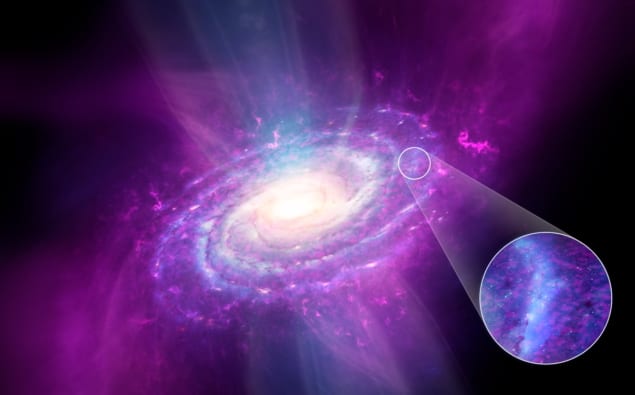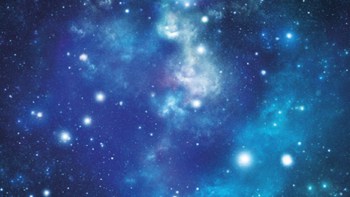
The interstellar medium (ISM) of gas and dust between the stars seems surprisingly patchy, with large areas missing lots of heavy elements, according to new research published in Nature. This could have repercussions for how we interpret the history of the galaxy and its chemical evolution, although not all astronomers agree with the findings.
The ISM is made primarily of hydrogen and helium, but is laced with what astronomers refer to as “metals” – that is, all elements heavier than helium, to distinguish between the primordial elements formed in the Big Bang and elements forged later by stars.
It had been expected that the metallicity – the abundance of heavy elements – of the ISM in the Sun’s neighbourhood would be about the same as that of the Sun itself. However, measurements of the ISM’s metallicity are complicated by the presence of dust grains that can lock metals inside them, hiding those metals.
To get around this, astronomers led by Annalisa De Cia of the University of Geneva used a two-pronged approach.
“Measuring the relative abundances of one element with respect to another was the key to estimating how much of these elements are locked up in the dust,” De Cia tells Physics World.
De Cia’s team observed 25 of the hottest, brightest stars, ranging from 200 to 9000 light-years away, using the Space Telescope Imaging Spectrograph on the Hubble Space Telescope. The light from these stars is partially absorbed by gaseous elements in the intervening ISM along the line of sight, and the strength of the resulting absorption lines tell us the abundance of different elements in the ISM.
The metal universe
Metals come in different abundances. For example, there should be more iron than zinc in the universe, since iron is produced in greater quantities by supernovae. De Cia’s team measured the abundances of different metals in the gaseous part of the ISM, and then compared these data to the expected relative abundances. Deviations from those relative abundances could then be attributed to dust depletion, with some metals such as iron and titanium being more prone to being locked up inside dust.
To double check the results, De Cia’s group then employed a second, independent measure of metallicity. This determines the overall amount of dust depletion using a different tracer to quantify dust, and then compares that to the abundances of the metals in the gaseous part of the ISM.
Putting it all together, the team found that the ISM’s metallicity is inhomogeneous on scales of tens to hundreds of light-years, with some regions having ten times more metals than others. Combining the results suggests that the average metallicity of the ISM in the Sun’s neighbourhood is just 55±7% of the Sun’s metallicity, with some parts of space as low as 17%.
De Cia attributes these variations to massive, in-falling clouds of pristine hydrogen gas that drop onto our galaxy from intergalactic space. Such clouds have been observed many times before, and are the leftovers of the formation of the galaxies. It had been assumed that such clouds would be efficiently mixed into the ISM, but De Cia’s results suggest otherwise.
Difference of opinion
However, not everybody agrees. “Definitely not,” says César Esteban López of the Instituto de Astrofísica de Canarias in Tenerife.
Esteban López has been an author on several papers that have used star-forming regions (known as H II regions, because they are filled with ionized hydrogen) to measure the metallicity of the galactic disc at different distances from the galactic centre. Their results imply that any variations in the metallicity of the ISM in the galactic disc are fairly small.
“Our data do not support such large inhomogeneities,” says Esteban López, who attributes these different conclusions to the assumptions made in the different methodologies, as well as arguing that the metallicity values obtained from the H II regions are “far more direct and give the most robust results, based on relatively simple and very well checked methods. Dust depletion is not a concern in our results.”
De Cia responds by pointing out that H II regions are full of dense, ionized gas that has already been processed by stars, and therefore represents a “small, special portion that is not enough to reflect all the complexity of the ISM” whereas “the neutral gas where we found the large inhomogeneities is more diffuse and extends to much larger scales”.
Changing galactic history
If the new results from De Cia’s team are correct, then it would have profound implications for models of the galaxy’s star-forming history and the chemical evolution of the Milky Way, and others.

Ancient star likely created from a colossal hypernova explosion
“One could imagine that a different composition of the gas could affect the way that stars can form from gas,” says De Cia. “And different compositions of the stars could affect what other elements will be further produced.”
This could lead to stars having formed relatively close to the Sun, but with a lower metallicity. Indeed, something similar has already been observed, says De Cia, citing results from as long ago as 1993 that indicate a large scatter in the metallicity of stars of the same age. In turn, it may even be more difficult to form rocky planets if the amount of available metals is too low.



